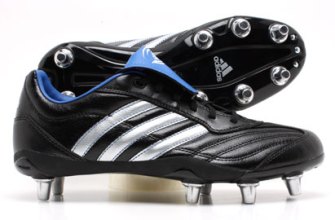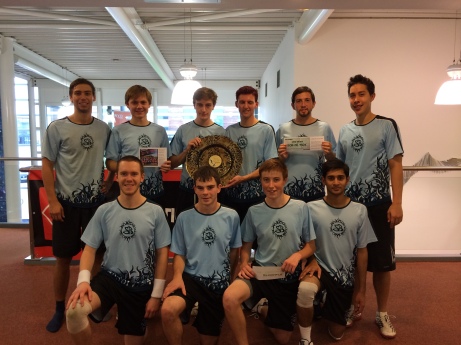Aim:
running trainings that maximise the learning of new skills and/other productive repetitions of existing skills
Implications:
- minimise downtime (planned rest time is good, faffing is not as it
kills intensity and learning) - have a clear focus
- keep each drill short
Before:
- a training should ideally fit into a long term plan (when in the season
is the training? What is the best sequence for learning different
skills?) - make a plan (with timings) taking into account your likely audience and
the likely weather (key point: if it’s windy, plan drills with
multiple discs and don’t require multiple completed throws) - communicate that training is happening and the focus, maybe send some
pre-reading/viewing
Just before:
- arrive early to set up a pitch and cones for the first drill
- get others to arrive early to get faffing, socialising, throwing and
individual specific warm up stuff done before the start time. We play a
team sport so we need to act together, late arrivers are bad for
teamwork – be clear with communication to them that what they are
doing is unhelpful. - as the weather forecast becomes the weather, and you get a better idea
of your audience (how experienced are they?), work out whether your plan
is still suitable or whether you need to adjust it (I often do this
during the warm up)
Start:
- on time! Set the tone for a purposeful training by starting on time – don’t alienate your most dedicated players and pander to your most
selfish ones by waiting for them to arrive. - if you have a lot of talking to do it may be best to do some before the
warm up (especially if it is cold) - it can be good to get someone else to run the warm up so that you can
run through the plan in your head. Ask them individually before the
start time so they can say no. The purpose of the warm up is not only
to get the body ready for the immediate work it is going to do but it is
also an opportunity to develop muscle memory for things like jumping and
changing direction.
Warm up offensive drill (also good for pre-game):
- after the warm up it may be good to spend a few minutes on a general
offensive drill to get people running, throwing and catching - try to maximise touches and minimise standing round (two good reasons
to avoid the endzone drill – another reason is that it encourages
people to throw longish discs across the field into the endzone –
great for turnovers, terrible for offense) - aim for a high number of discs to people and keep it short and snappy
(10ish minutes). If you are going to do the 70 pass drill much more
learning happens if you cycle through the throws one at a time rather
than doing 10 and then switching to the next 10 (and it’s much easier
to be flexible with the end point). - I like the Skogs drill (one quick upline cut), 1-2ing up the sidline,
kill drill (one player runs short shallow V cuts and it thrown to by
another at the end of their Vs – do about 6 and then switch), 4 O vs 3
D in a ~15m channel (good for warming up decision making and sideline)
and a simple hucking drill.
Setting up a drill:
- try to set up cones whilst the previous drill is still happening in
order to minimise downtime - explaining a drill or a structure (e.g. a new zone) can happen in
multiple ways, plan how you are going to do it beforehand. Some
examples: on a whiteboard/cones on the floor, with some unsuspecting
volunteers or you can collect together a few people before the end of
the last drill and teach them first to demo it to everyone else. - if appropriate, be clear where the pitch is (on your diagram/demo
drill) first and don’t proceed before everyone is happy about this - explain why we are doing the drill as well as how – it’s often
better to just do this briefly at the start with a new, complex drill.
Then, once the drill is running smoothly and people understand the
rotation, you can pause and get more focus on the aim. Talking for too
long at the beginning leads to people switching off. - with a complex drill it’s good to build it up gradually (just one
cut, then two, then with D) - explain things confidently; the vast majority of people want you to do
well and appreciate you running things for them. If you are under
confident (perhaps you are leading a practice where there are more
experienced players and it feels intimidating to tell them how to play)
it can be easier to say “I find it really helpful to throw the IO
early” or “a useful thing I was told/read is to …” rather than
present something as gospel.
During a drill:
- initially, focus on getting the drill running smoothly. Are the cones
the right distance apart? Is the timing of cuts right? Does the
rotation work? Is the work:rest ratio correct or do you need another
drill? - sometimes it’s best to not join in with the drill so you can think
these things through and start giving feedback, sometimes it’s best to
join in so you can get a better feel for how things are going. - give feedback that is related to the focus of the drill (commenting on
other stuff distracts from the focus). Be specific (“good work
running through that disc” or “keep that cut slightly wider”) and
use both praise and corrective advice – as the drill progresses you
should have more of the former and less of the latter. - if there are some good learning points that need a bit longer to
explain, better to pause the drill and share rather than saving for the
end so people can implement the advice - go set up the cones for the next drill!
Finishing a drill:
- the learning vs time graph generally starts high, goes up slightly as
people really understand what the drill is about then decreases. You
can get an extra small peak towards the end by saying e.g “last one
each” or “last 5”. Be wary of saying e.g “5 completions in a
row” since it is not always appropriate – if a drill has defence or
you are doing something outside your comfort zone completions are not
the focus. - as with the warm up offensive drill, keep drills short and punchy,
10-15 minutes. You can make them longer if you tweak them in a
substantive way (adding an extra cut, adding D). Changing from forehand
to backhand should happen after 5 minutes not 10 (generally…).
Games:
- games of 7 on 7 aren’t the best for developing players – most
players don’t get many reps with the disc in hand. For skill
development, it is better to have a few smaller games. - you can give games a focus by having special rules e.g. double score
and get more reps in by eliminating pulls/only allowing a certain number
of possessions per team.
Reflection:
- more learning happens if you reflect after the event so try to
encourage players to think about what they’ve been working on and try
to incorporate it into their game and you should be reflecting on the
practice you’ve just led. What went well? What could be better? Get
some feedback from people about what they thought and be open to
criticism, even if you disagree with it.
Nick Wong











